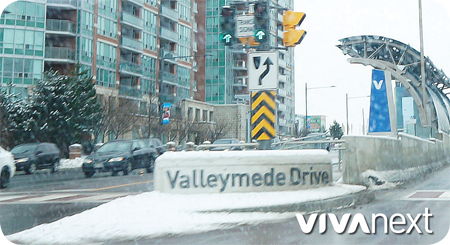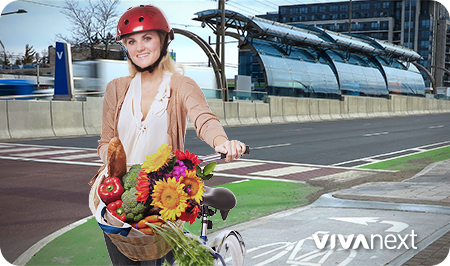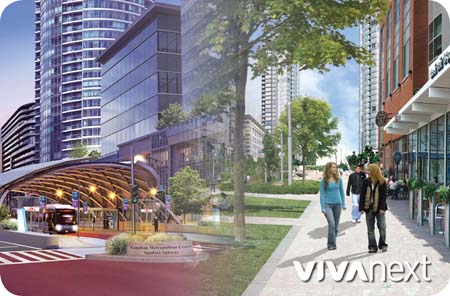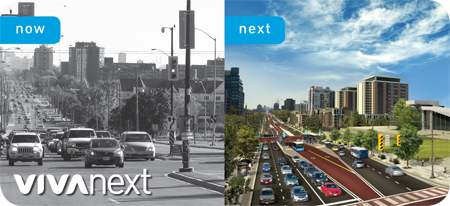
With its cold temperatures, snow and ice, winter is not the ideal construction season for roadwork in general, which is why most vivaNext construction is focused on other tasks for the next few months. But to make sure we’re ready to get going on roadwork as soon as it’s warm enough next Spring, our crews and those of various utility companies are keeping busy this winter doing a range of activities. Here’s what you can expect to see going on out there this winter.
A key task for all the vivaNext corridors is widening the roads so we can keep the existing number of travel lanes, plus make room for the rapidways and stations in the median. But before we can get going on construction to make the roadways wider, we need to remove and relocate all the utilities that previously ran beside the curb of the existing roadways. This step, which involves relocating a wide range of services including gas, hydro, telecommunications, water, and sanitary and storm sewer systems, requires painstaking coordination between contractors for our project as well as the utility companies and their crews. With contractors needing to be spaced from one another by both time and distance, and there being a logical sequence in which the services get relocated, this is a hugely time-consuming process that will be ongoing throughout the winter in various locations.
The specific activities vary from corridor to corridor, involving different utilities and work at different stages of completion. Where hydro service is above ground, hydro relocations involve crews restringing the wires on the new poles once they’ve been installed in their new locations, and then removing the old poles. Once the service is relocated on the new poles, crews then create the connections from the new service to individual addresses.
There’s also gas work underway in several areas along the vivaNext corridors, which involves relocating gas mains underground, and then attaching individual addresses to the new service.
And working in close coordination with the underground gas work are crews from the telecommunications companies, who are relocating their services into underground joint-use duct banks that the telecoms use. Constructing the duct banks involves much more work than simply stringing wires on poles, but the benefit is that with fewer poles along the side of the road there’s more potential to beautify the streetscape, which is an important objective for our project.
Finally, the last part of this complicated dance of roadside work involves our own crews who are busy relocating sanitary sewers and storm sewer systems and watermains.
All of this work is carefully planned out one step at a time and coordinated between our builder and the utility companies, then carried out in conditions that involve extra challenges due to the need to keep the ground warm enough to work in. But it will be worth it, since the heavy road widening and construction is best done in the warmer weather. And once it comes, we’ll be ready to go, widening the roads so that the rapidway stations can be installed.
So watch out for all the crews who are out there working this winter, and know that their work is an important part of the vivaNext schedule.










